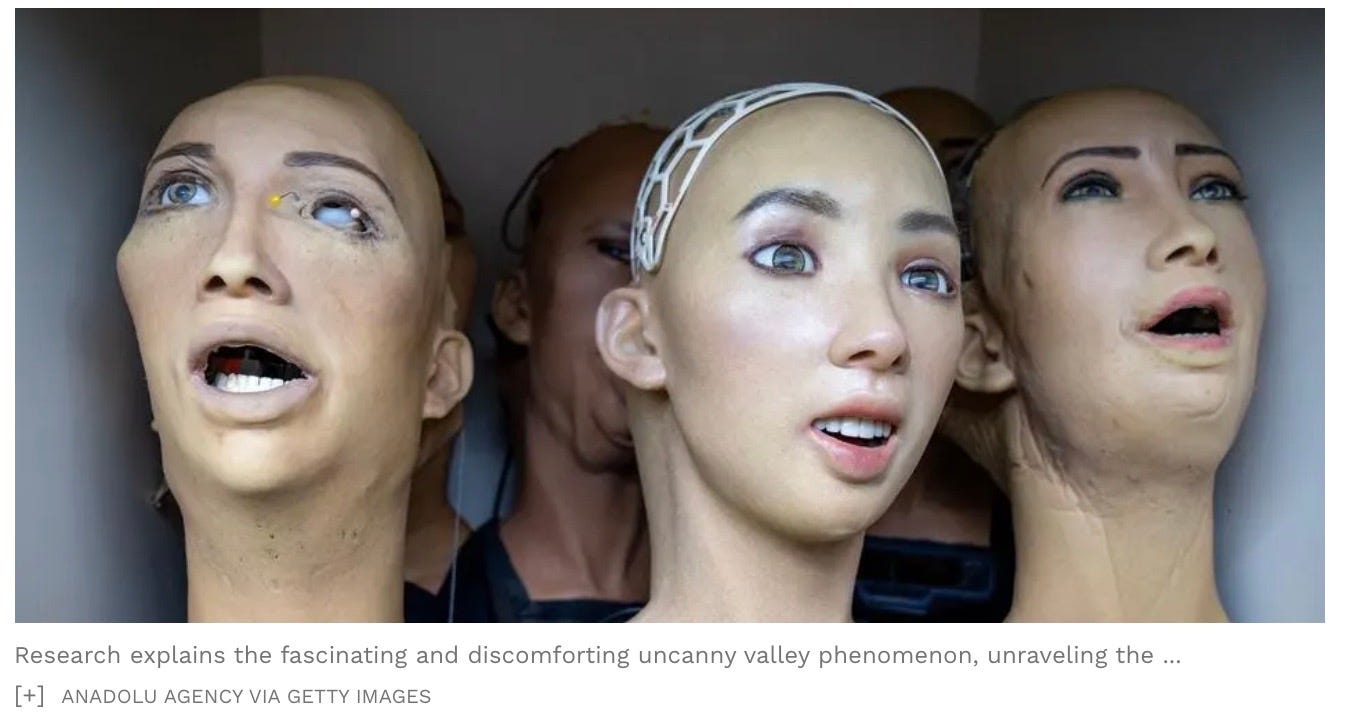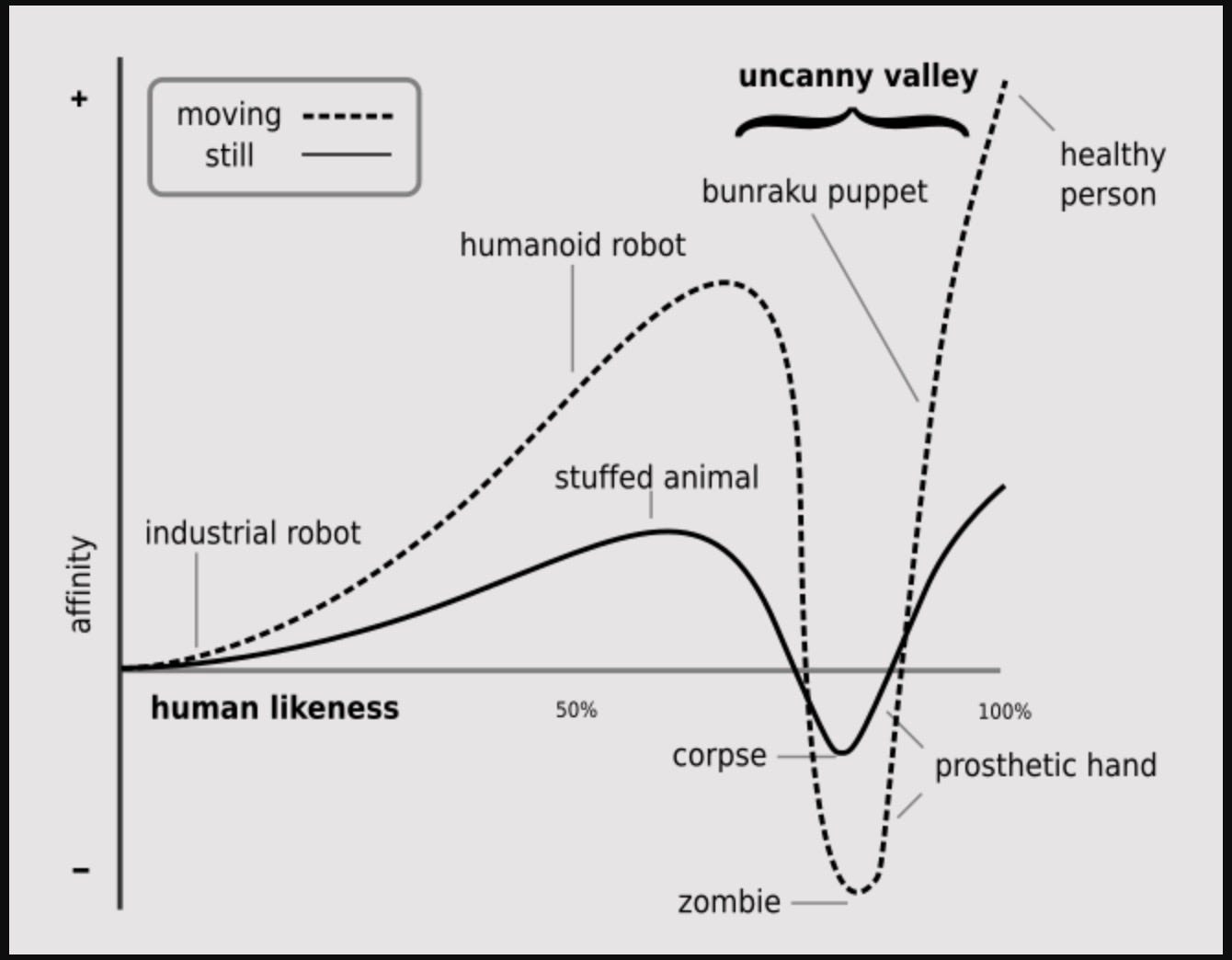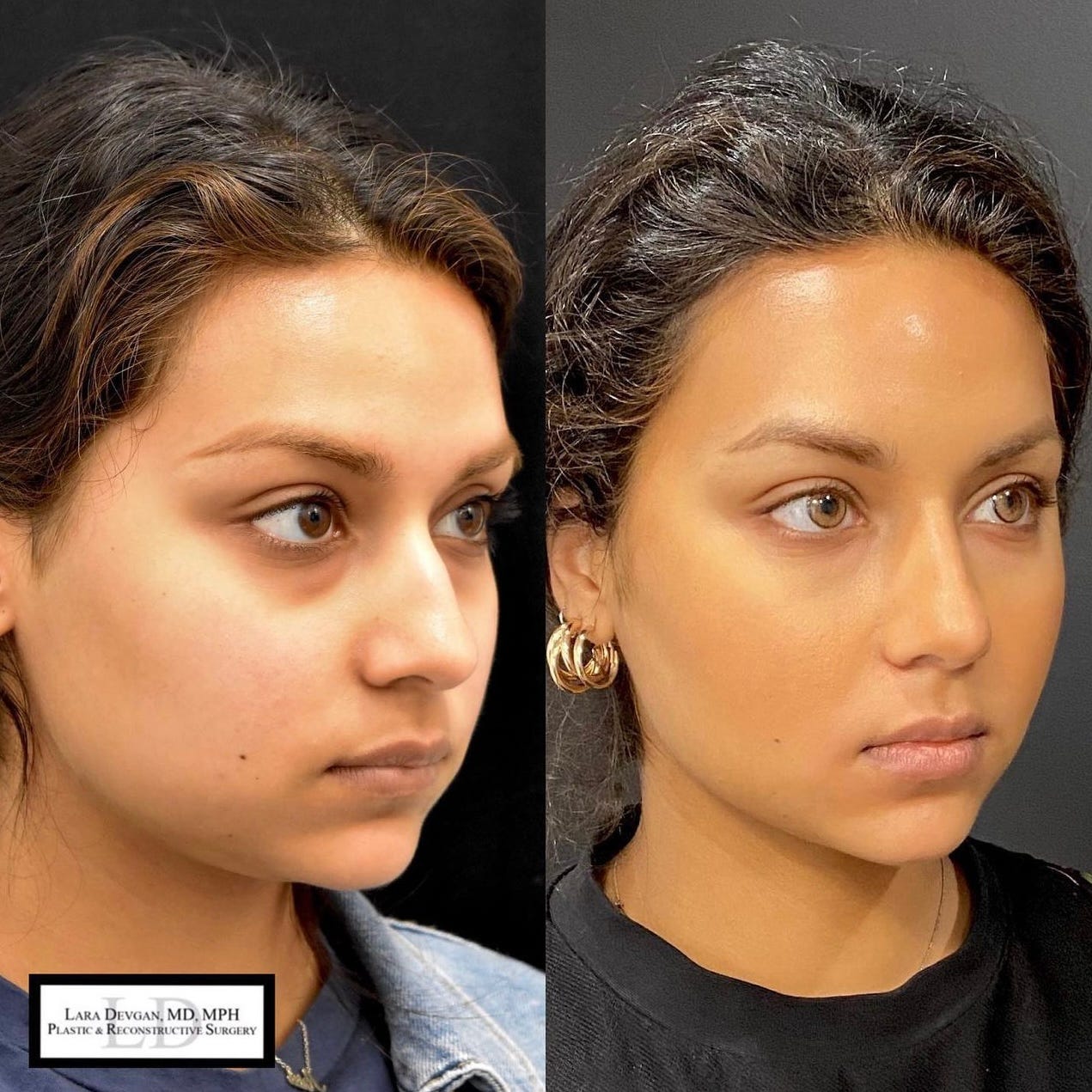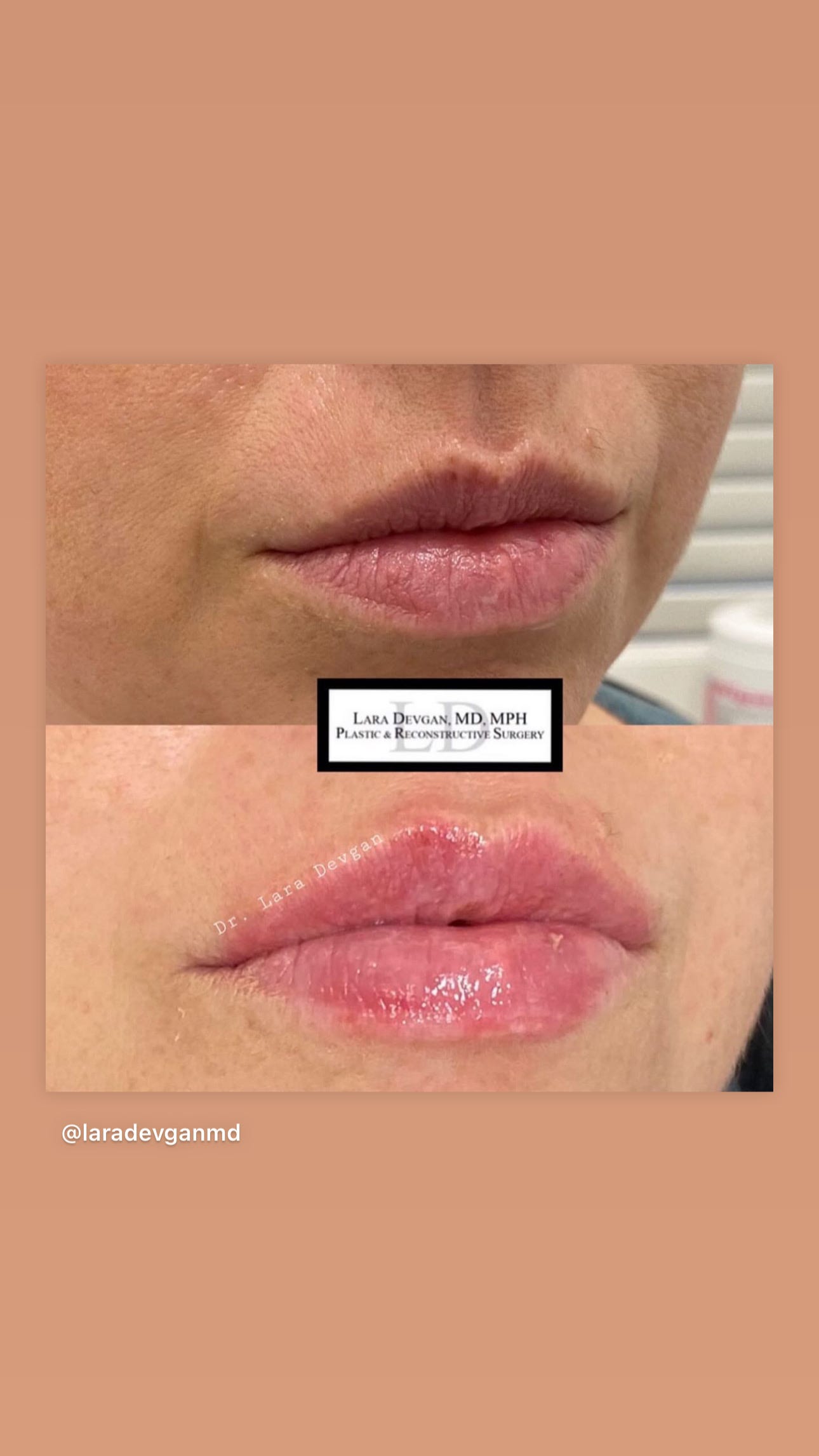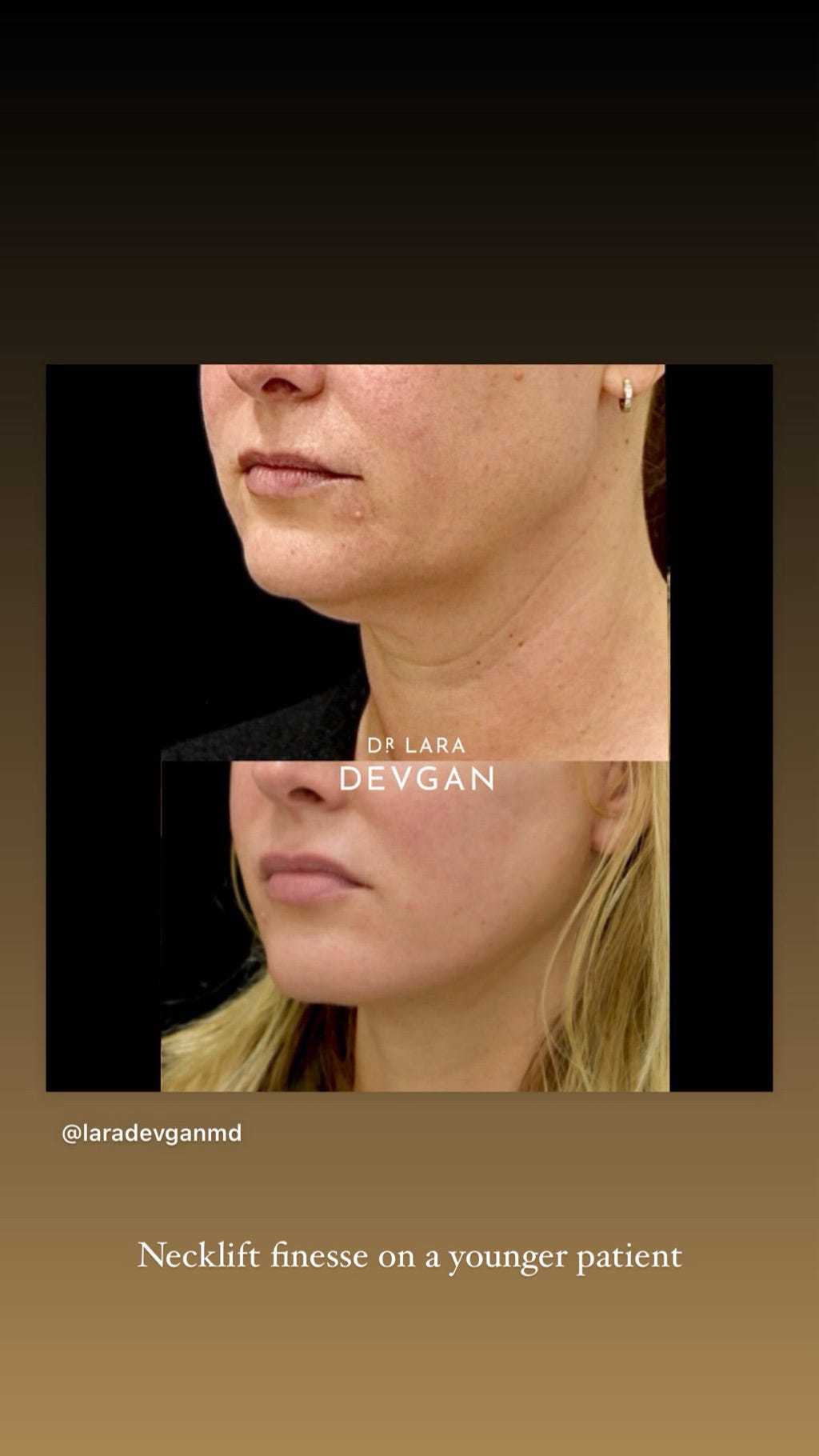The Uncanny Valley of Plastic Surgery
The psychology of a beautiful plastic surgery outcome, and why beauty is in the details
The concept of the uncanny valley, first introduced by roboticist Masahiro Mori in 1970, describes the eerie sensation people experience when a humanoid robot or synthetic figure appears almost, but not quite, human. Weird human-ish figures are creepy— they remind us of people, but we can tell instinctively that they are not like us. The familiar features we know so well as human are slightly off, and it gives us a feeling of revulsion.
The concept of the uncanny valley is has significant implications for plastic surgery, where our goal is to enhance or restore natural human beauty. The uncanny valley suggests that minor imperfections in surgical and nonsurgical outcomes (think puffy filler faces and overly taut facelifts) can lead to a sense of unease or discomfort, as the results might look almost human but somehow unnatural.
The Uncanny Valley in Plastic Surgery
Imagine the look of a puffy philtrum— the ducky “trout pout” look of overdone lip fillers. Imagine a facelift that pulls the corners of the mouth just a few millimeters too far lateral— the “joker mouth deformity.” Imagine a waist to hip ratio that is excessively exaggerated, an eyebrow that is overly arched, or a cheek that is unusually puffed. In plastic surgery, even a minor aberrance from anatomic principles sends us into the uncanny valley— and this is exactly what gives aesthetic plastic surgery a bad name.
The reason I often write that “beauty is in the details” is precisely this idea— the overwhelming importance of precision and an aesthetic that harmonizes seamlessly with a patient’s natural features to avoid dipping into this disconcerting territory. In plastic surgery, it is far better to tolerate minor imperfections in the interest of global facial beauty, than it is to obliterate all flaws but send the face into the uncanny valley. In short, we must delicately balance identity and beauty.
Image credit: Smurrayinchester - self-made, based on image by Masahiro Mori and Karl MacDorman at http://www.androidscience.com/theuncannyvalley/proceedings2005/uncannyvalley.html (archive), CC BY-SA 3.0, https://commons.wikimedia.org/w/index.php?curid=2041097
Perception Drift
One reason that dysmorphic and uncanny plastic surgery outcomes have become increasingly common is the notion of perception drift. Perception drift refers to the phenomenon that, over time, what individuals perceive as "normal" or "ideal" beauty can shift, influenced by media, cultural trends, and personal experiences. Facetune, filters, and social sharing (Instagram’s Paris filter!) can certainly play a role. This shifting perception can lead patients to seek procedures that push the boundaries of what is considered natural-looking. For surgeons, maintaining an awareness of these shifts is essential to counsel patients effectively and to aim for results that will remain appealing over the long term, even as societal standards evolve. The challenge lies in balancing patient desires with a professional commitment to outcomes that enhance natural beauty without appearing artificial.
Psychological Tachyphylaxis
The phenomenon of psychological tachyphylaxis further complicates the pursuit of aesthetic perfection. This concept describes how individuals quickly return to a baseline level of satisfaction following positive changes, necessitating increasingly dramatic interventions to achieve the same level of happiness or contentment.
Tachyphylaxis is a phenomenon where there is a rapid decrease in the response to a drug or treatment after repeated doses or applications, leading to diminishing effects. This term, originating from the Greek words "tachy," meaning fast, and "phylaxis," meaning protection, essentially describes a state where the body quickly adapts to a substance, reducing its efficacy over time.
In the context of plastic surgery and aesthetic treatments, tachyphylaxis can manifest as patients becoming less satisfied with their results over time, despite undergoing additional procedures or treatments. For instance, someone who initially feels thrilled with the outcome of their lip augmentation might find that subsequent treatments do not provide the same level of satisfaction, prompting them to seek more frequent or fuller lips. This can create a cycle where the patient is constantly chasing the initial high or level of satisfaction, leading to more invasive or numerous interventions.
The Hedonic Treadmill
This phenomenon is closely related to the concept of the hedonic treadmill, where individuals continually pursue more intense or frequent experiences to maintain a certain level of happiness or satisfaction. In plastic surgery, this can be particularly problematic, as it may lead to overuse of treatments, resulting in unnatural appearances or even health risks. Expectation management and judgment are critically important for a balanced, cautious approach to aesthetic enhancements.
We all jump on hedonic treadmills— it’s part of the human condition— it’s why people get tolerant to alcohol, why drug doses may need to be increased over time in some conditions, and why some people seek a puffier and puffier face, just to maintain the same concept of happiness. Part of the role of a skilled plastic surgeon with aesthetic judgment and a refined sensibility is steering patients toward naturalness, and putting rails on the edges of this narrow road we travel every day in our work.
Aesthetic Judgment
Beautiful, meticulous, and natural plastic surgery results rely heavily on the surgeon's judgment. The ability to discern when enough is enough, to understand the patient's needs and desires, and to predict how a procedure will age over time are critical skills. A surgeon's aesthetic sensibility and technical expertise must work in tandem to achieve results that are both subtle and impactful. This judgment extends to knowing which procedures to recommend and which to advise against, ensuring that the patient’s long-term wellbeing and satisfaction are prioritized over the allure of immediate, yet potentially excessive, transformations.
Ultimately, as Shakespeare taught us, discretion is the better part of valor. This principle reminds both surgeons and patients that sometimes, less is more. The best work is often undetectable, enhancing one's natural beauty without drawing attention to the fact that any work was done at all. This approach helps avoid the uncanny valley, aligns with shifting perceptions of beauty, and mitigates the effects of the hedonic treadmill. By exercising restraint and focusing on achieving harmony and balance, plastic surgeons can provide results that stand the test of time and enhance the patient’s natural allure.
For inquiries and more information, please email office@laradevganmd.com




